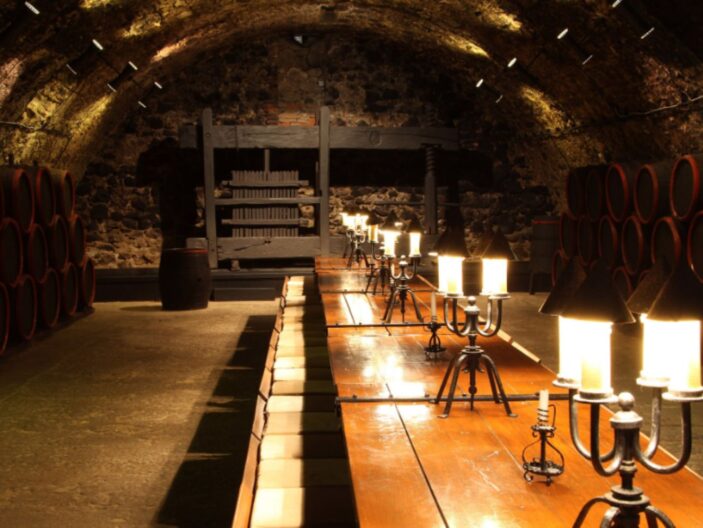Have you ever noticed signs of dampness in your cellar? Wondering how to tackle this issue and prevent it from reoccurring?
We will explore the importance of damp proofing in cellars, how to identify the source of dampness, and the step-by-step process of damp proofing a cellar yourself.
We will also discuss the different types of damp proofing methods and provide tips on maintaining a damp-free cellar.
Learn all you need to know about keeping your cellar dry and protected.
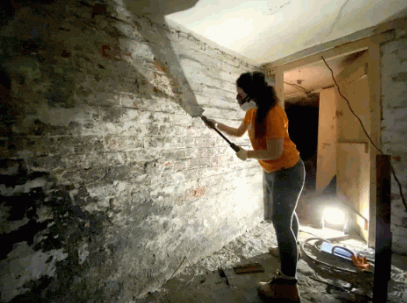
What Is Damp Proofing?
Dampproofing is a process that involves applying materials or treatments to prevent moisture from seeping into walls and floors, particularly in areas like cellars or basements. It aims to create a waterproof barrier to protect the space from water ingress and damp issues.
By implementing effective damp proofing techniques, property owners can maintain a dry and habitable environment, safeguarding their structures against the detrimental effects of moisture infiltration. Common spaces that benefit from damp proofing include underground areas such as crawl spaces, cellars, and basements, which are more susceptible to moisture penetration due to their below-ground positioning.
One prevalent method of damp proofing involves the use of membranes. These membranes act as a physical barrier, preventing water from seeping through walls and floors. By installing membranes during construction or renovation, property owners can enhance the longevity of their structures and mitigate the risk of structural damage caused by dampness.
Uncover more: How To Damp Proof Your Walls
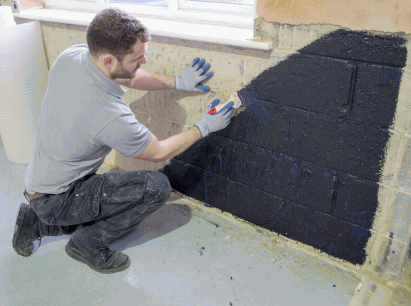
Why Is Damp Proofing Important For Cellars?
Dampproofing is especially crucial for cellars due to their underground nature, making them susceptible to water ingress and hydrostatic pressure from surrounding soil or groundwater. Without proper damp proofing, cellars can face issues like damp walls and floors, leading to structural damage and unhealthy living conditions.
Moisture control poses a significant challenge for cellars, as the underground environment inherently exposes them to water seepage and rising dampness. The risks associated with inadequate damp proofing include mold growth, musty odors, and potential damage to stored items. Hydrostatic pressure on cellar walls and floors can lead to cracks, efflorescence, and even structural instability over time. Implementing effective moisture control measures is paramount to maintaining a dry, safe, and habitable cellar space.
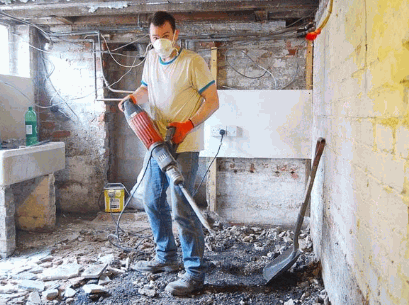
What Are The Signs Of Damp In A Cellar?
Signs of dampness in a cellar can include musty odors, mold growth on walls or floors, peeling paint or wallpaper, and visible water stains. These indicators often point to underlying issues such as water seepage or poor ventilation that need to be addressed through damp proofing.
Dampness in a cellar can also manifest through a feeling of dampness in the air, a general sense of humidity, or even a noticeable drop in temperature compared to other areas of the house. Along with these visual and olfactory cues, you might come across efflorescence on masonry surfaces or damp and rotting wood materials.
It’s crucial to be vigilant about these signs as neglecting damp problems can lead to structural damage, health hazards due to mold and mildew growth, and decreased indoor air quality. Therefore, taking early action through proper ventilation, drainage solutions, and damp proofing measures is essential to maintain a safe and healthy living environment.
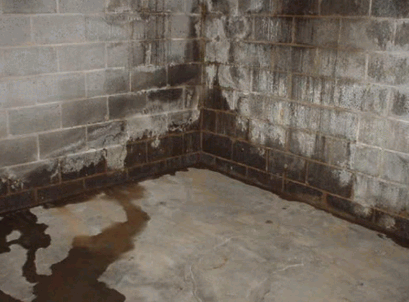
How To Identify The Source Of Dampness In A Cellar?
Identifying the source of dampness in a cellar involves conducting a thorough inspection of walls, floors, joints, and any visible cracks or holes. Common sources of dampness can include leaks, condensation, rising dampness, or water ingress through poorly sealed areas.
Beginning the inspection process by checking for leaks from pipes or drains is crucial. Water stains, mold growth, or damp patches on walls and ceilings may indicate a leak. Condensation can often be seen on windows and metal surfaces when warm, moist air meets cooler surfaces, leading to water droplets forming. Rising dampness occurs when groundwater seeps through the foundation, causing moisture to travel upwards through porous materials.
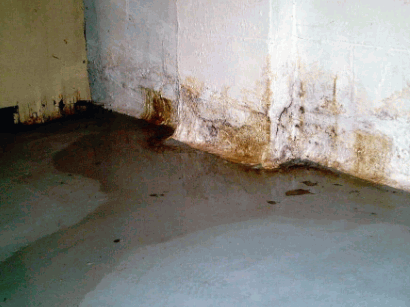
How To Prepare For Damp Proofing In A Cellar?
Preparing for damp proofing in a cellar involves gathering necessary tools and materials such as tanking slurry, waterproof coating, membranes, pumps, and mortar. Before starting the process, it’s essential to ensure the cellar is clean, dry, and free from any obstructions that may hinder the waterproofing.
Once the cellar is thoroughly cleaned, the next crucial step is to apply the damp proofing materials methodically. This typically involves using tanking slurry to create a waterproof barrier on the walls and floors. Waterproof coatings can be subsequently applied for added protection.
Installing membranes helps to prevent dampness from seeping through. In some cases, pumps may be required to manage excess moisture effectively. Mortar can be used to fill any gaps or cracks in the cellar walls before proceeding with the waterproofing.
What Tools And Materials Do You Need For Damp Proofing?
Essential tools and materials for damp proofing in a cellar include tanking slurry, waterproof coatings, cement, membranes, and pumps. These items are crucial for creating a protective barrier against moisture and water ingress, ensuring long-term waterproofing effectiveness.
Most notably, tanking slurry is a specialized mixture used to form a waterproof layer on walls and floors, preventing water seepage. Waterproof coatings, on the other hand, provide an additional protective layer, enhancing the durability of the damp proofing system. Cement plays a key role in filling gaps and sealing cracks, ensuring a seamless and watertight finish. Membranes act as a final barrier against moisture, adding an extra layer of protection.
In terms of application, using pumps can facilitate the efficient distribution of tanking slurry and coatings, ensuring even coverage. This comprehensive approach not only safeguards the cellar from dampness but also contributes to the structural integrity of the space, preventing potential damage and mold growth.
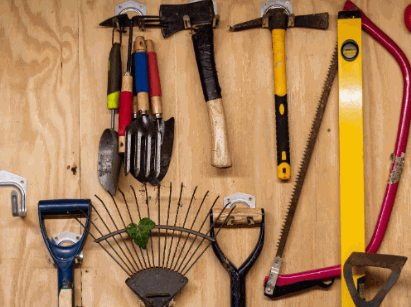
How To Damp Proof A Cellar Step By Step?
Damp proofing a cellar involves several key steps to ensure effective moisture protection. These steps include cleaning the cellar, sealing any cracks or holes, applying a damp proofing solution, installing a damp proof membrane, and adding a drainage system to manage excess water.
Properly cleaning the cellar is crucial as it removes any pre-existing mold or mildew that can exacerbate dampness issues. Sealing cracks and holes prevent water seepage, which is often a significant source of dampness problems. Applying a damp proofing solution creates a barrier against moisture infiltration, safeguarding the cellar from potential damage.
The installation of a damp proof membrane acts as an additional layer of defense, further enhancing the cellar’s protection against dampness. Integrating a drainage system is essential for effectively redirecting water away from the cellar, reducing the risk of moisture accumulation.
Step 1: Clean The Cellar
Before initiating the damp proofing process, it’s essential to thoroughly clean the cellar to remove any dirt, debris, or contaminants that could interfere with the adhesion of waterproofing materials. This step sets the foundation for effective moisture protection.
Ensuring that the cellar is properly cleaned not only facilitates the application of waterproofing solutions but also prevents any existing pollutants from compromising the integrity of the damp proofing system.
Cleaning the cellar involves removing mold, mildew, dust, and any other surface impurities using a combination of scrubbing, vacuuming, and disinfecting techniques.
Specialized cleaning products such as mold removers, disinfectants, and detergent solutions are highly recommended for optimal results. A clean surface promotes better adhesion of the waterproofing materials, leading to a more durable and effective moisture barrier.
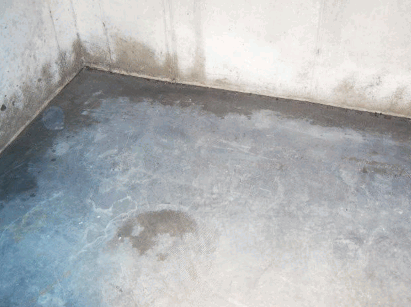
Step 2: Seal Any Cracks Or Holes
Sealing cracks and holes is a critical aspect of damp proofing a cellar as these openings can serve as entry points for moisture. Using appropriate sealants or mortars, ensure that all gaps in walls, floors, or joints are effectively sealed to prevent water ingress.
Properly sealing these areas not only helps prevent water intrusion but also plays a vital role in maintaining the structural integrity of the cellar. It is crucial to inspect the cellar thoroughly to identify all the areas that need sealing.
- Waterproof sealants are recommended for porous surfaces like concrete.
- Epoxy compounds work best for metal or plastic surfaces.
Applying hydraulic cement can be a suitable option for larger cracks and holes to ensure a lasting and secure seal.
Step 3: Apply A Damp Proofing Solution
Applying a damp proofing solution like tanking slurry is crucial to creating a waterproof barrier on cellar walls and floors. The slurry effectively blocks moisture penetration, providing long-term protection against dampness and water ingress.
Before applying tanking slurry, it is essential to prepare the surface by removing any existing coatings or contaminants and ensuring it is clean and dry. Once the surface is ready, mix the tanking slurry according to the manufacturer’s instructions.
Using a brush or trowel, apply the slurry evenly on the walls and floors, making sure to cover all areas thoroughly. Allow the first coat to dry before applying a second coat for added protection.
The benefits of using tanking slurry for cellar waterproofing are immense – not only does it provide a durable waterproofing solution, but it also helps in strengthening the structure of the cellar walls.
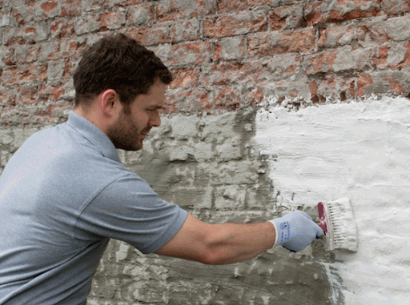
Step 4: Install A Damp Proof Membrane
Installing a damp proof membrane is essential for creating a resilient barrier against moisture in cellar walls and floors. These membranes act as a protective layer, preventing water ingress and enhancing the overall waterproofing of the space.
In terms of selecting the right type of membrane for damp proofing, there are various options available to homeowners. Common choices include polyethylene, bituminous, and cementitious membranes, each with its unique properties and suitability for different applications. Polyethylene membranes are popular for their flexibility and ease of installation, while bituminous membranes offer excellent durability.
Proper installation techniques play a crucial role in the effectiveness of a damp proof membrane. Ensure that the surface is clean and free of any debris before laying down the membrane. Use appropriate adhesives or fixing methods recommended by the manufacturer to secure the membrane in place. It’s essential to overlap seams and edges correctly to create a continuous barrier against moisture infiltration.
Step 5: Add A Drainage System
Incorporating a drainage system in the cellar helps manage excess water and prevent accumulation that could compromise the dampproofing. Proper drainage ensures that any water seepage or leaks are efficiently channeled away from the cellar, maintaining a dry and moisture-free environment.
With a reliable drainage system in place, the risk of mold, mildew, and structural damage due to prolonged exposure to moisture is significantly reduced. Effective drainage solutions, such as French drains or sump pumps, play a crucial role in safeguarding the cellar from dampness and water infiltration. By directing water away from the foundation and basement walls, these drainage systems preserve the structural integrity of the building and promote a healthier indoor living environment.
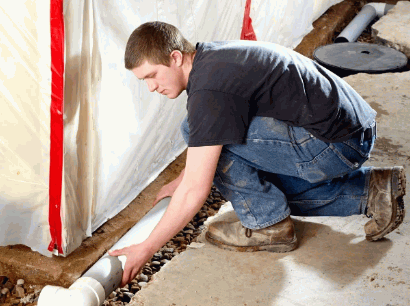
What Are The Different Types Of Damp Proofing Methods?
Various damp proofing methods are available to address moisture issues in different spaces like cellars. These can include chemical treatments, physical barriers like membranes, and innovative solutions such as electro-osmotic damp proofing systems.
Chemical treatments are often applied as a fluid or cream to create a water-resistant barrier within the walls.
On the other hand, physical barriers like membranes involve installing materials that prevent water penetration, such as bitumen sheets or plastic coatings.
In contrast, electro-osmotic dampproofing systems use electrical currents to repel water and prevent rising dampness in structures, especially in situations where groundwater levels are high or traditional methods are less effective.
Each approach has its own unique set of advantages and challenges, making the selection of the most suitable method a critical decision based on the specific requirements and conditions of the cellar.
Chemical Damp Proofing
Chemical damp proofing involves the use of specialized solutions or coatings to create a water-resistant barrier within cellar walls and floors. These treatments can effectively prevent moisture infiltration and provide long-lasting protection against dampness.
During the process, the chosen chemical solutions are carefully applied to the surfaces, penetrating deep into the substrate to ensure a robust barrier against water ingress. This method is preferred for its ability to address existing damp issues and prevent future problems such as mold growth and structural decay.
Chemical damp proofing offers a proactive approach to tackling damp problems, as it not only halts the current damage but also safeguards the structure for years to come.
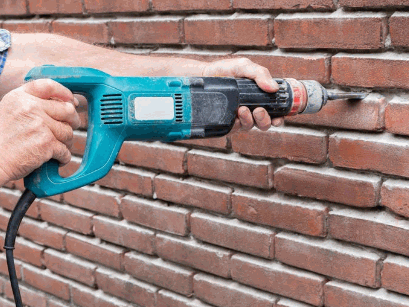
Physical Damp Proofing
Physical damp proofing relies on the installation of membranes or barriers to create a waterproof shield against moisture in cellars. These physical solutions effectively block water ingress and provide a durable defense mechanism against damp issues.
By utilizing specialized materials such as damp proof membranes or tanking systems, these barriers prevent water from seeping through walls and floors, ensuring a dry and habitable space. The installation process involves carefully applying the membranes to create a seamless seal that withstands hydrostatic pressure. Not only do these physical barriers safeguard against moisture-related damages, but they also contribute to the structural integrity of the building by strengthening the walls and foundations.
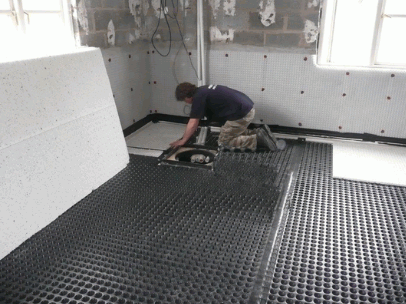
Electro Osmotic Damp Proofing
Electroosmotic dampproofing is a modern method that utilizes electrical currents to repel moisture and prevent water ingress in cellar walls. This innovative approach offers an efficient and eco-friendly solution for long-term dampness control.
Through the application of electrical currents, electroosmotic damp proofing creates a barrier within the structure’s walls, pushing water away and thwarting potential leaks. By harnessing technology to combat moisture at its source, this method is not only effective but also sustainable in maintaining a dry and habitable cellar space. Electroosmotic damp proofing eliminates the need for chemical treatments or invasive measures, making it a non-intrusive solution that preserves the structural integrity of the building.
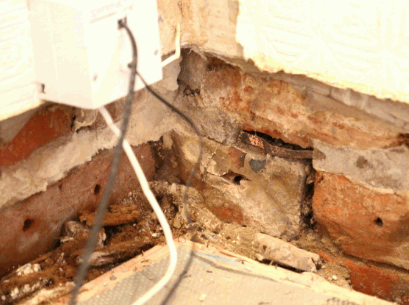
How To Maintain Damp Proofing In A Cellar?
Maintaining damp proofing in a cellar requires regular inspections to identify potential causes of damp reappearing. Common factors such as leaks, condensation, or structural issues need to be addressed promptly to sustain the effectiveness of the waterproofing system.
Preventive maintenance is crucial to avoid the recurrence of moisture problems. One of the key reasons for damp reappearing is inadequate ventilation, which can lead to excess humidity buildup in the cellar. By ensuring proper airflow and ventilation, you can reduce the risk of dampness significantly. Checking for any cracks in the walls or floors and sealing them with appropriate sealants is essential to prevent water seepage.
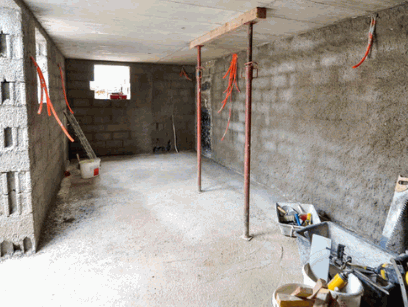
What Are The Common Causes Of Damp Reappearing?
Common causes of dampness reappearing in cellars include persistent leaks, inadequate ventilation, high humidity levels, or structural defects. Addressing these underlying issues is essential to prevent the recurrence of dampness and maintain the integrity of the damp proofing system.
Persistent leaks are often a primary culprit behind the persistent issue of dampness in cellars. When water infiltrates through cracks or gaps in the structure, it fosters the perfect environment for damp to thrive. Inadequate ventilation exacerbates the problem by trapping moisture in enclosed spaces, accelerating the deterioration of waterproofing materials. High humidity levels fuel the growth of mold and mildew, posing health risks and compromising structural stability. Structural defects, such as cracked walls or faulty drainage systems, can also lead to water seepage, further weakening the cellar’s defenses against dampness.
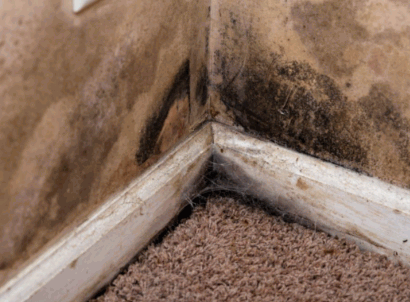
How To Prevent Dampness In The Future?
To prevent dampness in the future, cellar owners can implement proactive measures such as improving ventilation, maintaining proper drainage systems, conducting regular inspections, and addressing any structural vulnerabilities promptly. These preventive actions help safeguard the cellar against moisture-related problems.
Improving ventilation in the cellar can be achieved by installing vents or fans to promote air circulation. It is also beneficial to keep windows open periodically to allow fresh air to flow through. Proper drainage system maintenance is essential to prevent water buildup. Clearing any blockages in gutters, downspouts, and drain pipes can ensure that water is directed away from the cellar.
Regular inspections of the cellar for signs of leaks or water seepage can help detect issues early on. Addressing any cracks in the foundation or walls promptly can prevent water from infiltrating the cellar. Adopting these proactive strategies is crucial for effective long-term moisture control and ensuring a dry and healthy environment in the cellar.
